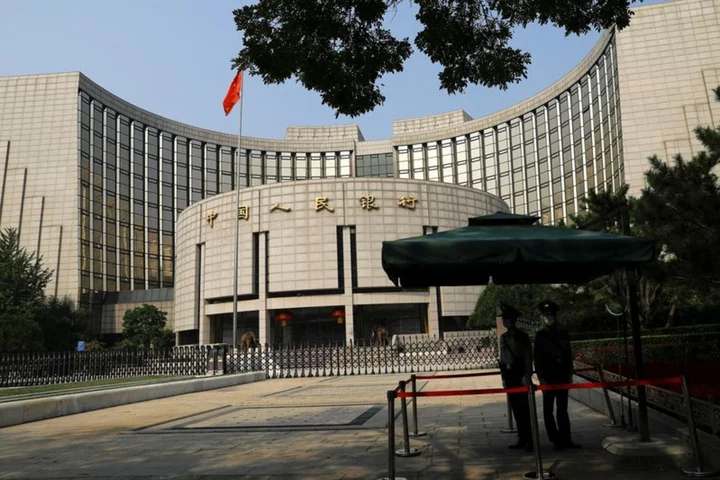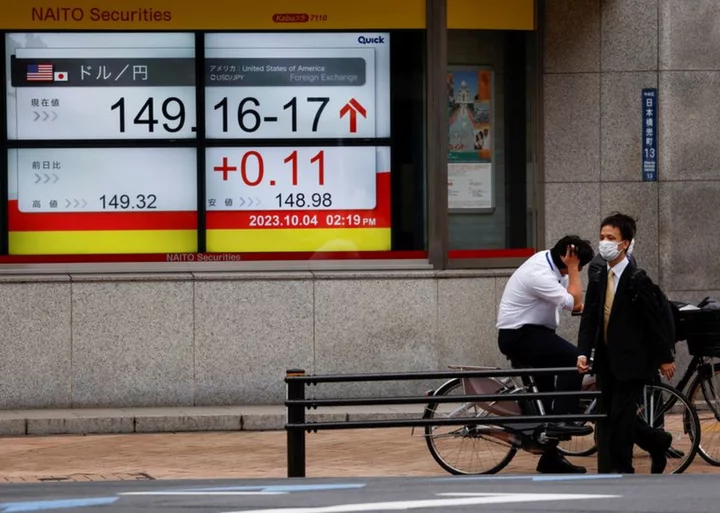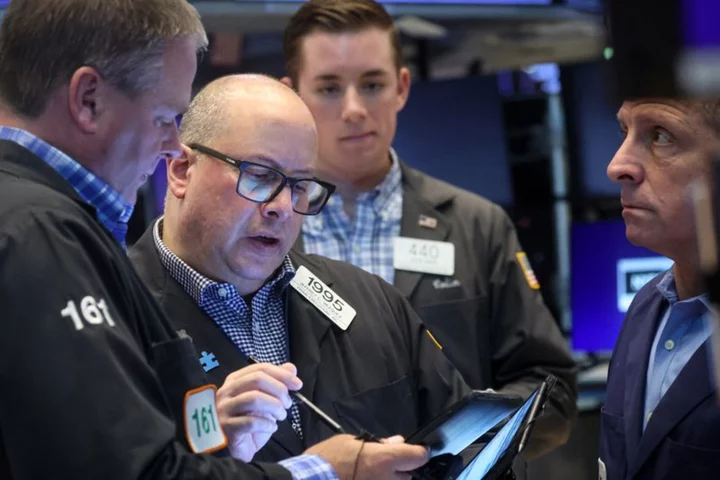A look at the day ahead in U.S. and global markets by Amanda Cooper, editor, finance and markets breaking news
Investors are always eager to get a look at the minutes from the Federal Reserve's most recent policy meetings. They scour every line and often every punctuation mark, for any sign of a shift in thinking. They might be disappointed later on Wednesday when the minutes of the Federal Open Market Committee's September meeting hit the wire.
In a statement after the Sept. 20 meeting, Chair Jerome Powell reiterated the central bank's more hawkish monetary policy stance, saying that although "people hate inflation", the jury was out on whether the central bank's work in tackling price pressures was done.
Cue a rip higher in the dollar, gold getting battered and a rise in bond yields.
Since then, however, Treasury yields have soared by a third of a percentage point, with those on 30-year bonds poking above 5% for the first time since August 2007 - an unwelcome development for homeowners, seeing as the average mortgage is above 7.5%, the highest since late 2000.
The Fed has always been pretty clear about its intentions to raise rates as high as needed for as long as needed to bring down inflation. But October's rise in yields has been enough to prompt a number of officials, even known hawks like Dallas Fed President Lorie Logan, to suggest this might mean there is less need for the another rate hike in the current cycle.
Consequently, yields are off those highs and strategists at ING at least do not believe the mood is there to push them back up right now. Geopolitical tensions are red hot, and, consumer inflation data for September is a day away.
Policymakers' sense on how much the rise in bond yields might affect broader credit conditions may not be reflected in today's minutes, not least because at that point, 10-year Treasuries were a good 30 basis points lower than now at 4.54%.
Borrowing costs and liquidity have tightened dramatically in the last couple of years, as central banks, including the Fed have raised rates, but also sold off their trillions of dollars in assets amassed as part of their efforts to support their economies, first during the financial crisis in 2008, and second, during the COVID pandemic 2020.
MARKETS IN 'UNCHARTED TERRITORY'
Deutsche Bank says the market is in uncharted territory in terms of the shrinkage in central banks' balance sheets. In the roughly 15 years since the financial crisis, central banks have never sold assets as quickly as they have in the last half-year.
Strategists at the bank estimate that process, known as quantitative tightening, has accelerated to a pace of $750 billion in the last six months, based on net asset sales of the Fed, the European Central Bank, the Bank of England, the central banks of Australia, Canada, New Zealand, Sweden and Japan.
While it is impossible to state with certainty what the implications are, the bank says, it is possible to quantify the impact on the market. Since the Fed kicked off QT (quantitative tightening) in November 2021, the S&P 500 is around 8% lower and 10-year yields are around 300 basis points higher.
Key developments that should provide more direction to U.S. markets later on Wednesday:
* Producer Price Index September: 8.30 ET
* Ten-year Treasury note auction: 11.00 ET
* Minutes of the FOMC Sept. 20 meeting: 2.00 ET
(Editing by Bernadette Baum)









